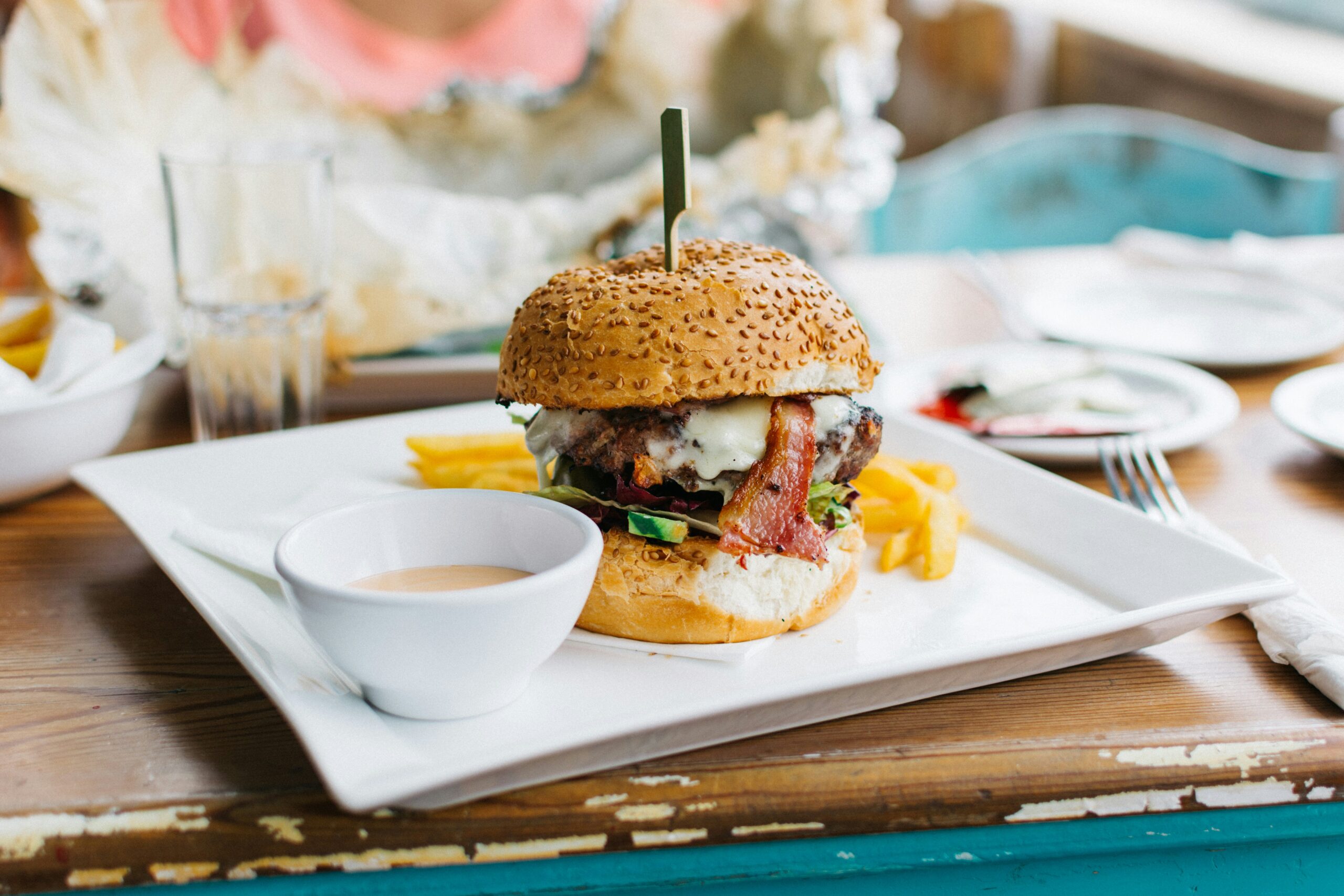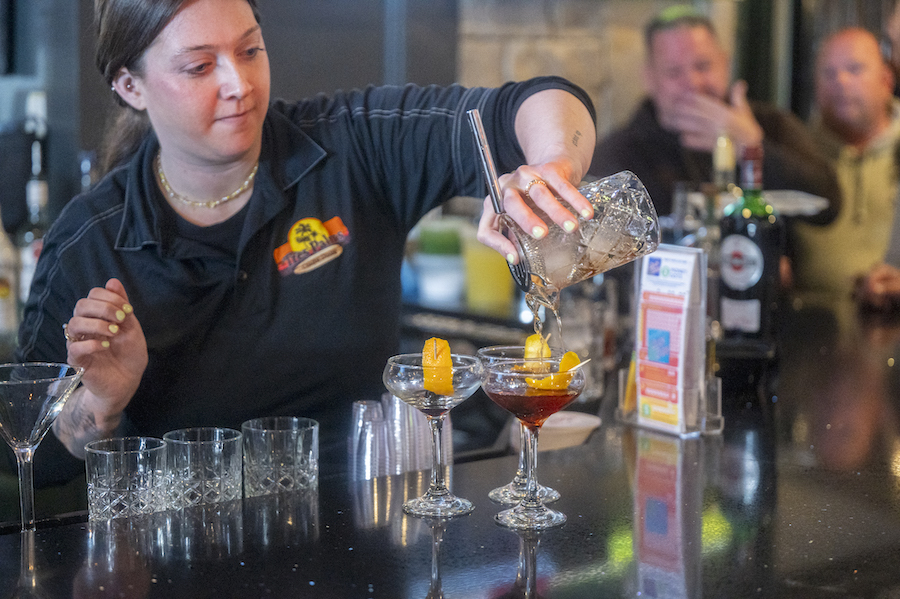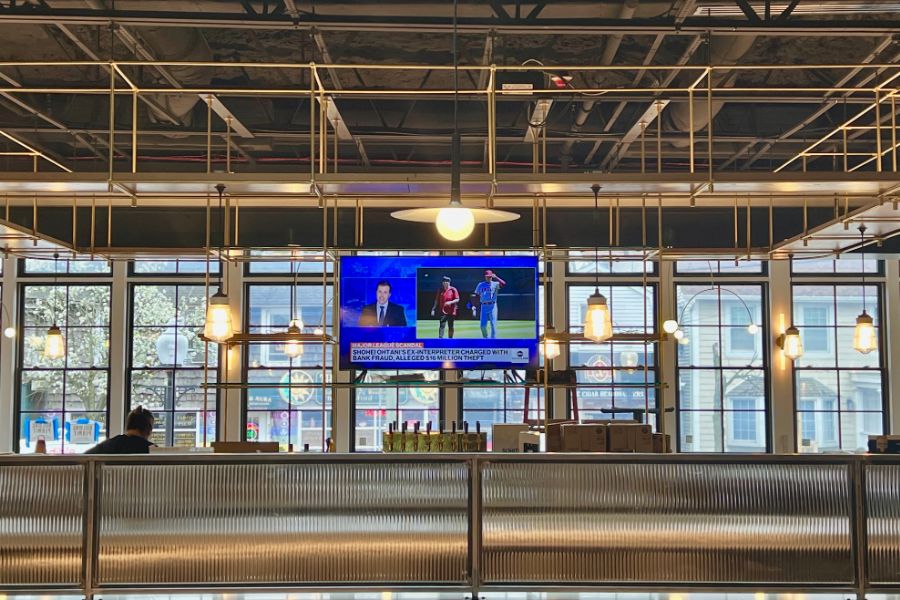
Greater Babylon coverage is funded in part by The Argyle Theatre, where Broadway comes to Babylon. Click here for tickets to ‘A Bronx Tale,’ performing April 25 to June 16.
Around 1,000 oysters returned to their home in the Great South Bay on Friday afternoon.
It was part of the Save The Great South Bay‘s initiative to support local oyster farmers struggling during the COVID-19 pandemic and to revitalize the bay’s aquaculture.
However, the 1,000 or so oysters are only “a drop in the bucket,” according to Robyn Silvestri, executive director of Save The Great South Bay.
“This is day one,” Silvestri said. “You need trillions of oysters to really regenerate — so this is certainly not a one-time thing.”
Save The Great South Bay, a 501(c)3 environmental non-profit, launched the Great South Bay Oyster Project — its objective is to purchase excess oyster inventory, repurpose it to seed oyster beds in the bay’s no-harvest zones, and improve the bay’s water quality through natural filtration.
“We decided we wanted to give back to our oyster farmers,” Silvestri said. “Local aquaculture is a key element in the efforts to restore the bay — these guys work really hard, they are out there in the elements and we are just thrilled that we can support them during this time.”
Story continues after photo.

Silvestri said the organization secured some funding to purchase the excess oyster supply for their project.
They collect the oysters that the restaurants don’t want for the base of their project — so “the bigs, the uglies, and the doubles.”
“We want the stuff that isn’t suitable for market, that might otherwise go to waste because it can’t be sold,” she said.
Todd Shaw, president of Save The Great South Bay, said this project wants to reflect the impact of the Billion Oyster Project in New York City that has been going on for years.
“After all the work and all the studies that have been done in Chesapeake and lower Manhattan for the Billion Oyster Project, and we want to put in hundreds, eventually millions, of oysters into the Great South Bay,” he said. “If we get a couple hundred of them in here, it will clean this bay in a minute — it will be self-sufficient.”
Many may not know that oysters are a crucial part of the Great South Bay’s ecosystem.
Around 70 years ago, Silvestri said, the oyster farms were “prolific.”
Story continues after photo.

The Great South Bay was known for its abundance of shellfish during the 1970s and was most famous for its Blue Point oysters.
At one point, approximately 75 percent of oysters worldwide came from Long Island’s Great South Bay, Silvestri said.
But since then, oyster production has been on a sharp decline.
In the 1970s and 1980s, they were overharvested, so they could not regenerate.
“Once they get overharvested, they don’t come back as quickly, or at all,” Silvestri said.
Other issues that arose with Long Island’s rapid development included nitrogen pollution, swim water run-off from the mainland, and the depletion of filtration, which introduced brown tides.
Oysters are a natural filtration system and can filter up to 50 gallons of water per day, removing pollutants such as nitrogen.
“They are nature’s filtration,” she said.
Excess nitrogen in the Great South Bay triggers algal blooms that reduce oxygen levels that chokes eelgrass, and triggers large-scale fish kills, which is why natural filtration is so important, Silvestri said.
Silvestri describes the group as being in the “Oyster Protection Program,” which will continue its conservation and restoration efforts for future generations to come.
Save The Great South Bay is working with The Billion Oyster Project, The Nature Conservancy, who is providing the intellectual capital and experience and The Gino Macchio Foundation, who is providing logistical support.
“We have an amazing contingency of expertise and knowledge and enthusiasm to make it happen,” Shaw said.
Story continues after photo.

The Gino Macchio Foundation provided the barge that takes the bags of oysters and puts them through a filter that sorts and cleans each one.
It mechanically organizes the oysters by too small for market size and the ones that can’t be sold on the market.
“[Gino] passed away in an accident, and he was an avid oyster fan, looking to become an oyster farmer,” she said. “To continue his legacy, they have jumped into this field.”
Blue Point Brewery was also on board the barge with their new Helles lager, “Drink The Bay Clean,” which they handed out to the oyster farmers and organizers.
The beer was created in support of Save The Great South Bay’s efforts and dedication to saving Long Island waterways. A portion of the proceeds goes towards the organization’s Creek Defender Program and Habitat Restoration Program.
Since its founding in 2013, Save The Great South Bay has created various initiatives to restore the bay’s ecosystem and surrounding South Shore communities.
This includes three main programs: The Creek Defender Program, Bay Friendly Yards, and Shellfish Restoration, which includes the Great South Bay Oyster Project.
There are 50 creeks that feed into the bay in 16 Long Island hamlets and villages, and the organization has appointed around ten Creek Defenders across these areas who monitor and control the creeks.
“They are like community advocates, they organize clean-ups, establish relationships locally, and they serve as extra eyes and ears for the creeks,” Silvestri said.
Bay Friendly Yards is a program that encourages community members to incorporate native plants, stormwater management, and eco-friendly techniques in their own backyards.
“The intention of it is as we re-establish local habitats, even if it’s a little patch on your lawn, it becomes this patchwork where the birds and the bees can once again find homes,” Silvestri said.
Silvestri hopes projects such as saving the oysters inspires the younger generation to get involved.
She said Save The Great South Bay already gets involved with local scout troops, school districts, and rotary clubs.
“By the time you really see the end effects of this, it could be years and years, so we’re doing it for the next generation — but they have to know about it,” Silvestri said.
Below are photos from the first day of the Great South Bay Oyster Program.












































